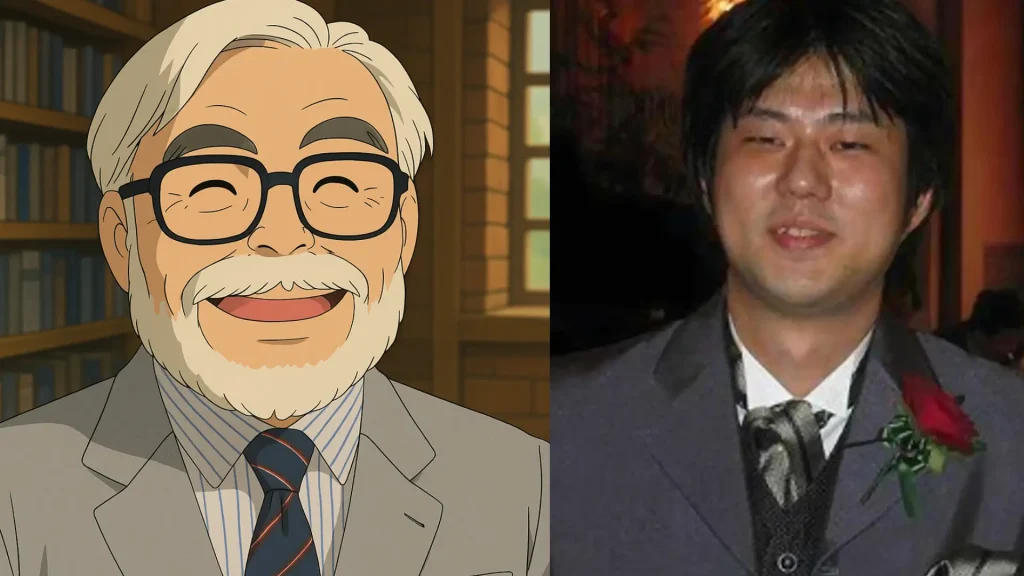As AI continues to be the reason of the fierce debates across creative industries, One Piece creator Eiichiro Oda has taken a surprisingly chill approach. While many artists see generative tools as a threat to originality, Oda has openly dabbled with AI, not to replace his work, but to test its limits. And that alone puts him in a fascinating position in the larger conversation.

Let’s be clear: this isn’t a tech evangelist situation. Oda’s experiments with AI aren’t flashy Silicon Valley pitches about “disrupting” storytelling. They’re more like a legendary mangaka picking up a new kind of brush, curious to see what marks it might leave. But in a world where some creators are calling for lawsuits over AI’s influence, even that curiosity stands out.
Yes, Oda Used AI – And He Did It Publicly
The story starts with a moment shared by Twitter user @sandman_AP. At some point in the last few years, Oda used an AI image generator to create a gender-swapped version of Rob Lucci, a popular villain from One Piece. The twist is that it wasn’t hidden away in some secret workshop. The result was shared on the official One Piece YouTube channel.
Oda used an AI-based illustration maker to feminize Lucci. It seems Oda Is positive about AI..😭😭 https://t.co/WFkSbNxGCi pic.twitter.com/3RFB37YSmL
— sandman (@sandman_AP) April 4, 2025
That’s not something you do if you’re trying to hide discomfort with AI tools. Oda wasn’t just messing around in private, he was inviting fans into the experiment. And that says a lot.
But he didn’t stop at art.
Oda Asked ChatGPT to Write a One Piece Chapter
In early 2023, Oda took things a step further. He tasked ChatGPT with writing an entire One Piece story. The result was a new villain called the “King of Shadows” who kidnaps Chopper, and the Straw Hat crew teams up with a mysterious shadow tribe tied to Nico Robin’s past.
Honestly, it doesn’t sound that far off from something you’d find in the actual manga. It’s got tension, character stakes, lore-building, it ticks the boxes. But Oda’s verdict? Just one word: “unexciting.”
That one word speaks volumes. For a creator known for intricate worldbuilding, emotional payoff, and long-form storytelling, the AI’s version just didn’t cut it. It wasn’t bad. It was just missing… soul.
Oda Isn’t Anti-AI – He’s Just Not Impressed (Yet)
That’s what makes Oda’s stance so compelling. He’s not sounding alarm bells. He’s not clapping back at fans. He’s not making big promises about AI changing the way he writes. He’s just… exploring.
And that stands in contrast to others in his orbit. One Piece anime episode director Megumi Ishitani publicly criticized AI art trends, especially those mimicking Studio Ghibli’s aesthetic. She even called on Ghibli to sue OpenAI. And yet, here’s Oda, experimenting with the same tools, without a trace of panic.
This divide isn’t unique to One Piece. The anime and manga world is deeply split on AI. Some creators fear losing their artistic identity. Others worry about job security. And fans aren’t quiet either, Reddit and Twitter are full of heated takes about AI-generated content lacking emotion, originality, or just straight-up human weirdness.
Creativity Isn’t Binary – and Oda Knows It
What Oda’s doing isn’t about taking a side. It’s about feeling things out. He’s not trying to co-write the next arc with ChatGPT. He’s just poking at what’s possible. That’s not ignorance, it’s awareness.
In fact, it lines up with the view of Goro Miyazaki (yes, that Miyazaki), who has said AI might someday make full animated films. But even he’s clear: AI can’t replicate the emotion, the spark, the human connection that makes great stories actually matter.
And that’s the point. Oda seems to get that. His AI-written One Piece story didn’t fail because it was written by AI. It failed because it didn’t feel right. It didn’t live up to his standards. He’s not against the tool, he’s just not lowering the bar for it.
The Future of Manga Might Include AI – But Not Like You Think
So what does all this mean for the future of anime and manga?
AI might help with translations. It might automate boring tasks in animation. It might make niche series more accessible. But if Oda’s approach tells us anything, it’s that the core of storytelling, real, messy, human storytelling, isn’t going anywhere.
He’s not afraid of the tool. He just doesn’t confuse it for the artist. And honestly? That might be the healthiest take we’ve seen yet.

